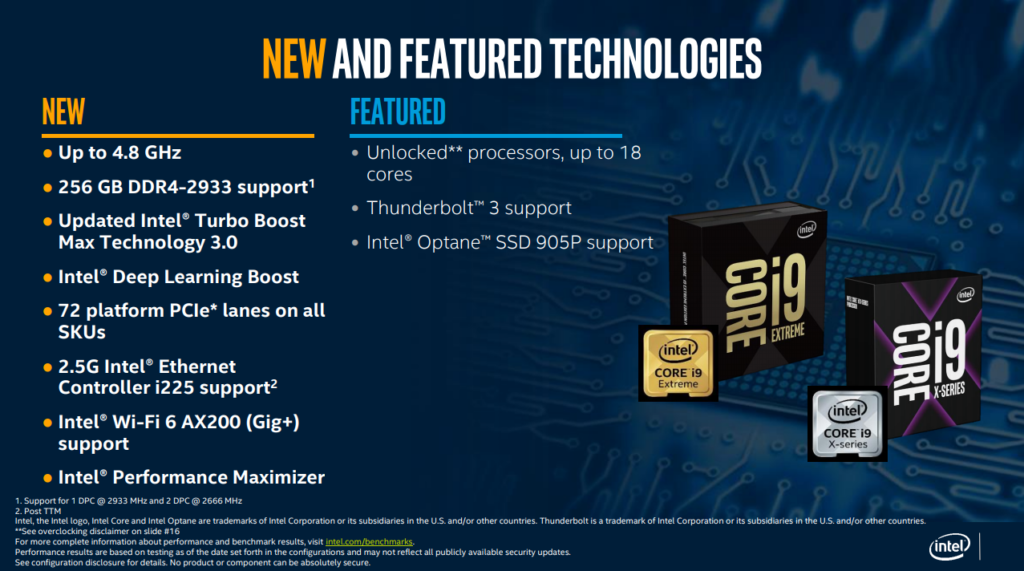Cascade Lake-X Detailed
I’m not going to get into the weeds with the microarchitecture design of Skylake CPU’s as they’ve been around for several years now. Most of Intel’s processors over the last several years are all just variants of this architecture and that includes Cascade Lake-X. There are no IPC improvements here. All of the optimizations either add features or improve clock speeds. What you need to know is that Cascade Lake-X is built on the same 14nm process Intel’s been using since 2014. Intel has its own fabs as opposed to using a third party as AMD does. I won’t get into it, but essentially, Intel’s process issues have become legendary at this point.
It’s currently hamstrung with a 14nm process node for their high-end CPU’s which limits their potential. The 14nm process is getting to a point where it is beyond mature, its straight-up ancient. Intel does have a 10nm process, but we aren’t likely to see desktop processors built on it for quite some time and that’s being optimistic about it.
Features and Improvements
Intel doesn’t have much of a slide deck for this launch, so I don’t have that many fancy slides in this one. In fact, they provided two slides and that’s it. The first lists features and updates from the previous generation.
PCI-Express and Memory Support
Intel has improved the PCIe controller by increasing the lane count to a total of 48 vs. 44 on the outgoing Skylake-X CPU’s. This brings the platform total to 72 PCIe lanes. This is more than the 64 (60 usable) offered by AMD’s X399 and 1st or 2nd generation Threadripper’s. However, there are still fewer CPU based PCIe lanes offered by the Cascade Lake-X architecture.
Intel still doesn’t have support for PCI-Express Gen 4.0. Even if Cascade Lake-X had it, there isn’t a new platform for it. These CPU’s are designed to fit into existing X299 motherboards with a BIOS update. Intel’s lack of PCI-Express 4.0 support was a limitation we expected. Intel would need a new platform to support it. This is one of the least of Intel’s issues right now as support for PCI-Express Gen 4.0 isn’t a huge deal. It will be some time before this has a significant impact anywhere but storage. Even then, PCIe 4.0 devices aren’t exactly common right now, though PCIe 4.0 SSD’s are out there and not hard to find.
Officially, memory speeds have increased to DDR4 2933MHz over DDR4 2666MHz on the Skylake-X parts. This by itself isn’t a significant improvement as memory speeds in the HEDT space have been able to go beyond that since the X99 days using Haswell-E based CPU’s. However, the newly updated silicon does support up to 256GB of RAM. This is double what the old Skylake-X CPU’s supported and is not only a welcome change but necessary as AMD is still way ahead on this front.
Intel does note in its documentation that when using more than four DIMMs, clock speeds could be negatively impacted. While this isn’t generally true in the mainstream segment, it is not really new information on the HEDT side. That said, your mileage may vary.

